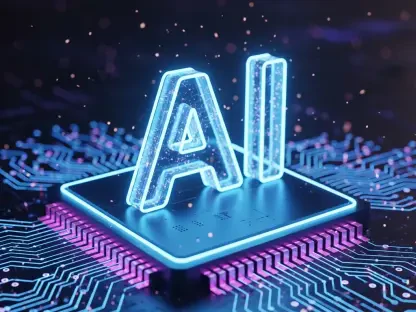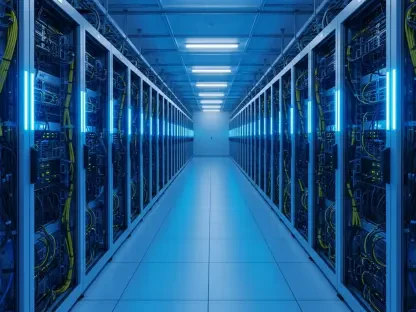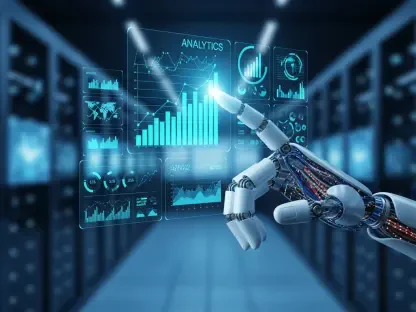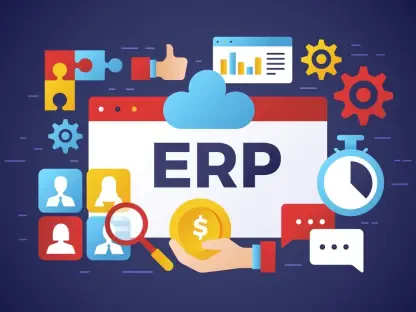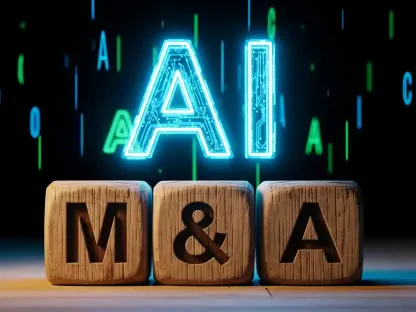Imagine a world where enterprise workflows operate with near-human intelligence, autonomously adapting to complex challenges without constant oversight, and this vision is rapidly becoming reality as UiPath (NYSE: PATH), a titan in automation software, has catapulted its stock price by 23% following groundbreaking partnerships with AI and tech leaders like Nvidia, OpenAI, Google, and Snowflake. This seismic shift, announced recently, underscores a transformative moment for the automation industry, where agentic AI—systems capable of independent decision-making and learning—promises to redefine how businesses function. This market analysis delves into the forces driving this surge, examines current trends in enterprise automation, and projects future trajectories, offering strategic insights for stakeholders navigating this dynamic landscape.
Market Context and the Catalyst for Growth
The enterprise automation sector has long been a cornerstone of operational efficiency, with Robotic Process Automation (RPA) serving as the foundation for streamlining repetitive tasks. However, the limitations of traditional RPA in handling unstructured data or dynamic environments have paved the way for a more intelligent paradigm. UiPath’s strategic alliances with industry giants mark a pivotal response to this demand, integrating advanced AI capabilities into its platform. The immediate market reaction—a 23% spike in stock value—reflects robust investor confidence in UiPath’s ability to lead this transition, positioning the company as a bellwether for the broader shift toward agentic automation.
This development arrives at a time when global enterprises are increasingly prioritizing digital transformation. With industries from healthcare to finance grappling with data overload and operational complexity, the appetite for solutions that go beyond static automation is surging. UiPath’s partnerships are not merely incremental; they represent a bold leap into a market hungry for innovation, where the convergence of AI and automation could unlock billions in value. This analysis aims to unpack the implications of these collaborations against the backdrop of a rapidly evolving sector.
In-Depth Analysis of Market Trends and Projections
The Shift to Agentic Automation: A Defining Trend
The automation landscape is undergoing a profound transformation, moving from rule-based RPA to agentic AI systems that exhibit autonomy and adaptability. This trend is driven by the need for tools that can interpret context, process unstructured inputs, and evolve through continuous learning. UiPath’s integration of technologies from partners like OpenAI, with its GPT-5 models, and Nvidia, with high-performance AI for secure applications, positions the company at the forefront of this shift. These advancements enable workflows that are not just automated but intelligently orchestrated, setting a new benchmark for enterprise efficiency.
Market data suggests that the demand for such intelligent systems is accelerating. Industry reports project the global AI-driven automation market to grow at a compound annual growth rate of over 25% from 2025 to 2030, fueled by adoption across sectors like customer service and supply chain management. UiPath’s enhanced platform, bolstered by tools like UiPath Maestro for AI agent orchestration, is well-poised to capture a significant share of this expansion. The 23% stock surge serves as a tangible indicator of market belief in this trajectory, highlighting how agentic automation is no longer a niche concept but a core driver of competitive advantage.
Strategic Partnerships as a Market Differentiator
Central to UiPath’s market momentum are its collaborations with leading tech entities, each contributing distinct strengths to the automation ecosystem. Google’s Gemini-powered voice agents simplify user interaction, making automation accessible through natural language, while Snowflake’s Cortex AI transforms data insights into actionable processes. These integrations create a comprehensive suite of solutions that address diverse enterprise needs, from fraud detection to personalized service delivery. Such a multifaceted approach not only enhances UiPath’s offerings but also differentiates it in a crowded field.
Competitively, this positions UiPath ahead of traditional RPA players like Automation Anywhere and Blue Prism, who may struggle to match the depth of AI integration. Smaller AI startups, lacking the scale or ecosystem of these partnerships, face an uphill battle to remain relevant. The market implication is clear: companies that fail to embrace intelligent automation risk obsolescence as enterprises gravitate toward platforms offering end-to-end, adaptive solutions. UiPath’s alliances could thus trigger a wave of consolidation or innovation among competitors, reshaping the sector’s hierarchy over the next few years.
Future Projections: Opportunities and Headwinds
Looking ahead, the trajectory for agentic automation appears robust, with UiPath likely to lead adoption across key industries. Healthcare could see tailored AI solutions for patient data management, while financial services might leverage secure automation for real-time fraud prevention. Analysts anticipate that by 2027, over 60% of large enterprises will incorporate some form of agentic AI, driven by platforms like UiPath’s. This growth, however, hinges on seamless integration of diverse technologies and the ability to scale without compromising security or reliability.
Challenges loom on the horizon, particularly around regulatory scrutiny and ethical concerns. As AI systems assume greater autonomy, issues of transparency, bias, and accountability could prompt stricter governance frameworks, potentially slowing adoption in certain regions. Additionally, economic factors like talent shortages in AI expertise may hinder implementation for some firms. Despite these headwinds, the market consensus leans toward sustained growth for pioneers like UiPath, provided they navigate integration complexities and maintain a proactive stance on compliance.
Societal and Economic Ripple Effects
Beyond corporate implications, the rise of agentic automation is poised to influence labor markets and economic structures. By offloading routine tasks to AI, businesses can redirect human capital to strategic roles, potentially fostering innovation. However, this transition also raises concerns about job displacement and the urgent need for reskilling programs to prepare workforces for an AI-augmented future. Markets with advanced technological infrastructure are likely to adopt these solutions faster, widening the digital divide with less-prepared regions.
Economically, the efficiency gains from intelligent automation could drive significant cost savings and productivity boosts, particularly for sectors with high operational overheads. Yet, the societal cost of uneven adoption or ethical missteps—such as biased AI decisions—cannot be ignored. The market must balance these dynamics, with companies like UiPath potentially playing a pivotal role in shaping best practices for responsible deployment. This broader impact underscores the stakes of the current automation wave, extending far beyond stock prices or quarterly earnings.
Reflecting on the Market Shift and Strategic Pathways
The analysis of UiPath’s 23% stock surge and its groundbreaking AI partnerships paints a picture of an industry at a turning point, where agentic automation emerges as the new frontier. The market’s enthusiastic response underscores a collective belief in the transformative power of intelligent systems, while the competitive and societal implications highlight the complexity of this shift. As the dust settles on this announcement, it becomes evident that the automation sector has entered uncharted territory, with UiPath leading the charge.
For businesses and investors, the path forward demands strategic alignment with this evolving landscape. Companies are encouraged to explore platforms integrating agentic AI to maintain relevance, while investing in workforce training to harness human-AI collaboration. Monitoring regulatory developments also proves critical, ensuring compliance with emerging standards. As the market continues to evolve, stakeholders must remain agile, ready to adapt to both technological breakthroughs and unforeseen challenges in the quest to redefine enterprise efficiency.



